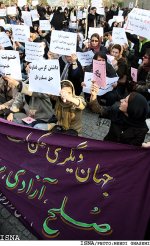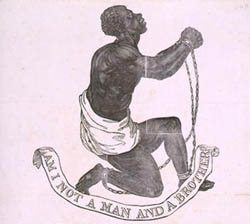Over My Shoulder #18: Barbara Deming’s “A World Without Prisons” (1970), from We Cannot Live Without Our Lives
You know the rules; here’s the quote. This is A World Without Prisons, a short piece from 1970 by Barbara Deming, a radical feminist poet and activist, and a advocate of nonviolence. The piece originally appeared in the movement rag Win, but I read it in her anthology We Cannot Live Without Our Lives (1974), which I picked up from the overflowing stacks at Cross Street Books (the best used bookstore in the world, opportunely located three or four blocks from my house). I read this either lounging in bed or over lunch in the kitchen; I forget which.
The topic of prisons has come up here before (cf. the comments on GT 2004-12-15: God damn it. and GT 2005-12-13: Murder in the first, for example). Something I haven’t been able to say very much about are the radical changes that I believe to be necessary if anything that might be called a prison
could possibly be justified in a free society — because I reject the use of violence for vengeance and punishment as an aggressive violation of the prisoner’s human rights. Deming, concisely and smartly, says a lot of the things that I would want to say, and also some things that I wouldn’t; I offer this as something interesting in its own right, and also perhaps a beginning for a conversation.
I do, in good conscience, have to note in passing how an otherwise wonderful piece is marred by a relic of the American radical left’s hideous flirtation with Maoism: those bucolic Chinese nonprisons
that Deming alludes to, with their group discussion and self-criticism are the Laogai forced labor camps (best known in the United States as reeducation camps
). While Deming actually offers the beginnings of an important difference in basic premises between what she suggests, on the one hand, and the indoctrination functions of Laogai camps, on the other, her basically sympathetic mention serves as a bitter reminder of how often and casually humane impulses and clear vision were mingled with apology and denial for the crimes of the 20th century’s monster-States. The hope is that we now can extract the former and save it from the latter.
Anyway, on with the quote:
A World Without Prisons
After the revolution, let us hope, prisons simply would not exist–if by prisons we mean places that could be experienced by the men and women in them at all as every place that goes by that name now is bound to be experienced. All prisons that have existed in our society to date put people away as no human being should ever be put away. I tried to write about this in Prison Notes. They attempt a kind of insane magic–attempt to wish the
criminalout of existence, because he is a problem to society. This not only commits an outrage (casts prisoners out of the human race) but is absurd, of course, because the prisoners–unless they are in for life–return to society. And they return, after this experience–unless they are particularly hardy of spirit, which, happily, some men and women are–notrehabilitatedbut wounded in their selfhood.Of course it can be said of jails, too, that they try–by punishing the troublesome–to deter others. No doubt, in certain instances this deterrence actually works. But generally speaking it fails conspicuously. There is one more thing that they can be said to attempt–that is, to place people who are doing harm to others where they cannot do that harm. Though more often they put people who are doing harm to themselves–for example, drug addicts and alcoholics (those without money, that is)–where still more harm will come to them. After the revolution, surely the only good reason for institutions that could still be called prisons–because they take people and place them under restraint–is this reason: wanting to keep people from harming others.
But if institutions of restraint might still be necessary, they should no longer be institutions of punishment at the same time. Punishment cannot heal spirits, can only break them.
What would these institutions of restraint be like? A prefatory note: After the revolution, when one person injures another, society would concern itself most immediately to give help to the person who has been injured. Present-day
justiceis careless of both thecriminaland the victim–wears its blindfold when either one stands before it and asks to be seen. (Thisjusticehas always been pictured as a woman, so I know that I am supposed to write notitbuther,but I find I balk at this.) I recall, just for example, the experience of a young woman who was raped by a group of youths. Before she had been given adequate medical attention or even allowed the rest that she needed, she was forced to go down to the police station for questioning. There she told the police that she doubted she could identify her assailants, and was reluctant to try, as she didn’t believe in punishment. But they would not let her leave. And she had to endure now a prolonged second violation–their bullying questioning. No concern for the one who has been hurt. Only the one obsessive concern–to find someone to punish. Here the victim herself will do.After the revolution, it might very well remain necessary to place people where they could not do harm to others. But the one under restraint should be cut off from the rest of society as little as possible. There should be no censorship of mail. Family and friends should be allowed to visit at will–in fact, to move in with the prisoners if they wished. And if safety permitted, the prisoner should be allowed to make visits outside. He–or she–should be allowed to live as happy and productive a life as possible. The point would be to seek how to mend his relationship to society. These nonprisons should investigate in depth–with the help of the prisoner–the question: why did he act as he did? See the book about Chinese prisons (by Allyn and Adele Rickett called Prisoners of Liberation) which describes methods of group discussion about prisoners’ antisocial behavior.
But I would add emphatically: one question should always be raised very seriously in such discussions. Does the
antisocialact perhaps reveal that society itself needs more changing–is frustrating or oppressing its citizens in some unbearable way? For the act might have been one stemming from selfishness (counter-revolutionary)–and so the prisoner is the one to be helped to see this and to change–or it might have been one stemming very naturally from a response to some felt injustice.These nonprisons, then, should above all be schools–in the most deep sense. And they should not be places that are considered, as prisons now are, beyond the pale–places from which
good citizens(except for occasional gray ladies) keep away. They should be continually entered, as scholars, by those who are the most serious citizens–for here their society can be studied at its weakest point.–Barbara Deming, A World Without Prisons (1970), from We Cannot Live Without Our Lives (1974), pp. 14–16.

 George Washington was the man who established the American republic. He led the revolutionary army against
the British Empire, he served as the first president, and most importantly he stepped down from power.
George Washington was the man who established the American republic. He led the revolutionary army against
the British Empire, he served as the first president, and most importantly he stepped down from power.
 You see, the thing about Washington is that while he was busy Not Being a King by returning to
You see, the thing about Washington is that while he was busy Not Being a King by returning to